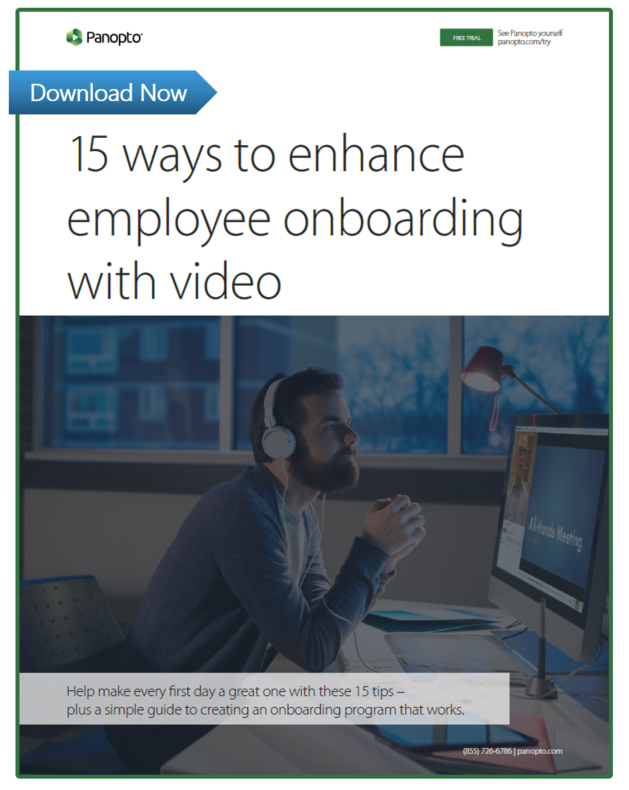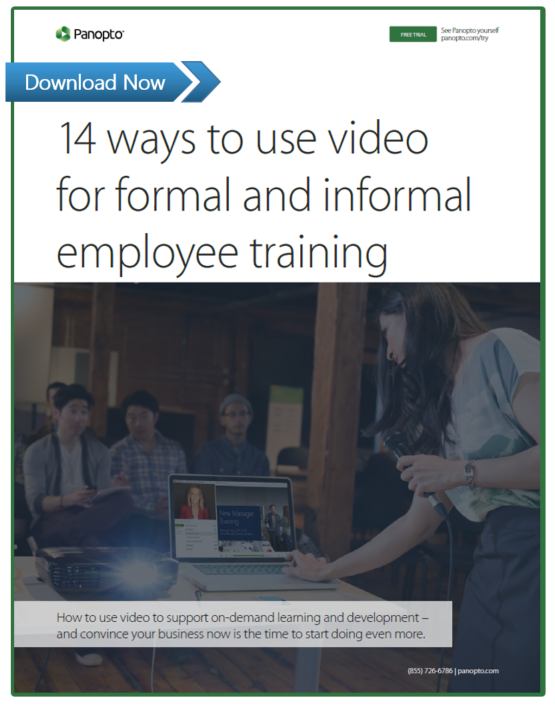- Communications
Four Ideas to Help HR Teams Do More With Less

In the world of human resources, it sometimes feels like the Great Recession never ended.
According to research from the Hackett Group, even with projected revenue growth up 7 percent year over year, corporate HR budgets have been essentially flat — if not in decline. HR operations budgets are down a percent. Departmental staffing is down almost 3 percent. According to Hackett, human resources was the only business function to experience cuts to both staffing and budgets.
As HR leaders look to the future, finding ways to increase efficiency will be the year’s top task.
Yet improving departmental productivity is shaping up to be no easy goal. With revenues back on the rise, organizations are bringing on new employees, rolling out new programs and plans, and investing in new offices, new partnerships, and new acquisitions. In a more perfect world, HR budgets should be ramping up to help manage all that personnel activity, not staying locked flat at mid-recession levels.
A Chance to Redesign HR Operations for the Future
In any department in any organization, there’s a temptation to look at a flat budget and start planning how to survive 12 months until the case can be made for an increase next year.
Simply waiting, however, comes at a price. Departments flush with cash often find it hard to justify rebuilding with an eye toward the future — after all, they can afford to maintain the status quo and invest around the edges.
It’s those times where “do more with less” becomes the motto that gives leaders a chance to chart a new course. Increased team member productivity may be the short-term goal, but departmental scale should be your target — investing in scaling your output today is easy to justify as a fiscal necessity, and well done, one that tomorrow will offer your team the foundation it will need to make better strategic use of more generous budgets in the future.
Now, then, is the time to redesign your HR practice for scale.
4 Scalable Human Resources Training & Communications Ideas
A key to helping your HR department do more with less is finding tools that can complement and supplement your existing staff and help make the most of their every activity. Investing in the right technologies can help your team’s work be more effective, more engaging, and more valuable than ever.
While many of the technologies now targeted for human resources teams are highly specialized and designed to address niche opportunities, one tool stands apart as a familiar, flexible, simple means to help HR departments do more in almost any environment — video.
Video is helping HR teams make their efforts more efficient — scaling output and allowing for easy engagement across time and distance with a medium that’s proven effective at sharing ideas and information. Here’s a quick look at just some of the ways other HR leaders are using video today:
1. Automate Employee Onboarding With Video Training Content
 Organizations are quickly recognizing the importance of onboarding, both for new hires and for internal employees moving into new roles. Effective onboarding decreases the time required for employees to get up to speed in their positions, and helps reduce turnover numbers (and the related costs) among recent hires. Yet for many HR and Learning and Development teams, onboarding is a chore — a rote task built to deliver the same information over and over again each time someone takes on a new job. Often it quickly becomes a task either overlooked for other team priorities or that winds up being handed off to hiring managers — which is a problem, as it means the onboarding experience quickly becomes inconsistent inside the company.
Organizations are quickly recognizing the importance of onboarding, both for new hires and for internal employees moving into new roles. Effective onboarding decreases the time required for employees to get up to speed in their positions, and helps reduce turnover numbers (and the related costs) among recent hires. Yet for many HR and Learning and Development teams, onboarding is a chore — a rote task built to deliver the same information over and over again each time someone takes on a new job. Often it quickly becomes a task either overlooked for other team priorities or that winds up being handed off to hiring managers — which is a problem, as it means the onboarding experience quickly becomes inconsistent inside the company.
A better solution is to organize that rote, repetitive onboarding process into an on-demand video series that can be shared with new hires whenever and wherever they come aboard. Video can actually help make onboarding easier to include in a new hire’s first days on the job — rather than requiring scheduled time to meet with HR and others, new hires can always watch a video any time it fits into their schedules.
We’ve uncovered 15 ways to use video to enhance your new employee onboarding program in our white paper. Download your free copy today for even more new hire training ideas.
2. Connect Your Execs And Increase Transparency
More and more organizations are hearing the call for increased internal transparency. Employees want to know how the business is operating, what the latest strategies are and what’s driving them, and how they can align their work to best contribute to the company’s mission.
In response, organizations are offering ever more executive communications — messages from senior leadership designed to share exactly the kind of information employees are asking for. And two of the strategies seeking to create this transparency with executive communications just happen to be perfect examples of how to supplement existing HR activities with video. Town Halls and Executive Roundtables both bring employees and senior leaders together to discuss the state of the business, ask questions, and offer real insights. Both are conducted in-person — town halls typically in larger settings like auditoriums, while roundtables more commonly find themselves in more smaller spaces like conference rooms.
Most importantly, both town halls and employee roundtables thrive on being done in person — meaning that all their value will be lost for those employees who can’t attend. Unless, of course, you record them with video and make them available in your own video library. Video is a great way to extend the value of executive communications, without requiring huge added costs or scheduling an endless number of repeating exec comms sessions.
Watch an executive communications video made with Panopto
3. Corporate Training Anytime, Anywhere
A huge amount of the operating budgets many HR and Learning and Development teams face today is simply spent on training room logistics. Rooms for training, events, and discussions must be rented, speakers coordinated, travel and meals paid for — it all adds up. IBM, for example, has reported that upwards of 40% of its classroom training costs were spent on travel and lodging. In just the 2 years after the company moved just half of its training programs to an eLearning format, it saved $579 million.
Rooms for training, events, and discussions must be rented, speakers coordinated, travel and meals paid for — it all adds up. IBM, for example, has reported that upwards of 40% of its classroom training costs were spent on travel and lodging. In just the 2 years after the company moved just half of its training programs to an eLearning format, it saved $579 million.
With video, there’s no need to schedule multiple training or event sessions at multiple offices — any message or information can be efficiently and effectively shared remotely, helping HR leaders recoup facilitation costs that would otherwise consume the annual budget. Best of all, video maintains the critical elements that make in-person sessions useful — a recorded presentation gives the event leader a chance to use verbal and nonverbal delivery techniques to drive home important points, and video analytics can ensure that viewers watched the recording in full.
Video can even add value — enabling viewers to rewind and replay important points, search for content spoken or shown during the video, and to revisit concepts at a later date without needing to reschedule the presenter.
Check out our free white paper for 14 more ways to use video for formal and informal learning — and why now is the time to start doing even more.
How much can you save
with video-based e-learning?
Calculate Your Savings
4. Stop Repeating Yourself — Communicate More Efficiently
According to Forrester Research, employees are 75 percent more likely to watch a video than to read text like documents, emails, or web articles. Every HR professional knows the frustration of sharing a detailed message about a new program or policy — only to be beset by a stream of questions already answered in the document sent in by employees who dashed off a response without reading the text in full. Everyone in a modern, lean organization is busy. Sometimes every one of us just doesn’t have the time to parse each line of each message we receive.
Video helps to solve that — offering a combination of images, text, movement, human faces, animation a more to create a medium far more engaging than print alone. Video presentations have been shown to help boost recall — meaning they make your message more memorable. And as Forrester notes, a video is far more likely to be reviewed than an email or memo — meaning more people will see your message in the first place.
With more people engaged — and via a medium that helps them better remembers your message — video can help save your team time by reducing the number of questions they’ll need to field from the rest of your organization.
Watch a corporate training video created with Panopto
Try A Video Platform Built to Support HR Teams
Panopto is a video platform that enables you to scale HR operations, reduce the cost to deliver events and training, expand internal communications efforts, and support social learning and creative solutions, helping your human resources team redesign itself both to support today’s efficiency-driven expectations and tomorrow’s new expanded opportunities.
To learn more about how you can use video to support and supplement your HR team, request a free trial of our software today!




